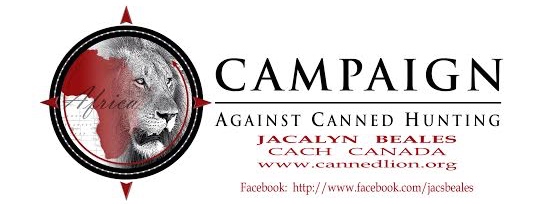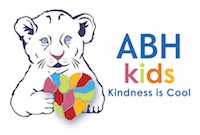Working Together To Save Africa’s Lions
- At March 26, 2015
- By Rosemary Wright
- In Guest Writers
 1
1

Working Together To Save Africa’s Lions
And Every other Species in Between – By Using The Power Of Social Media
Working Together To Save Africa’s Lions – Regardless of what type of activism or advocacy you’re involved in, it’s no secret that working together is key to furthering a cause and achieving results. I see and experience people working with one another everyday, to make things possible.
Guest Writer
Jacalyn Beales – CACH Canada
Whether I’m looking for support or advice from fellow CACH members, or simply interacting with various groups over social media (such as Saving The Lion Foundation or Exposing Cub Petting). The lion advocacy community is both a large and supportive one, something I personally have come to appreciate and respect.
I’m unclear as to how it works for other organizations; but with orgs and groups like CACH, PACH, Saving The Lion, For the Love of Wildlife etc. social media is key to not only promoting the lion’s cause but also advocating for these creatures’ rights and freedoms. Just think how much more difficult it could prove to be if we did not have the ability to reach thousands of people, all from a Smartphone, laptop or tablet.
How would we get the word out? Phone calls, emails, texts – that simply isn’t the way we all network and connect anymore. Social media is the driving force behind many an organization, group, charity and cause. Though social media does have its ups and downs – anything you say on social media can and will be used against you in a another post or blog (maybe even a court of law) – there is no denying its essential and necessary role in today’s world of animal activism and advocacy.
You may be asking, “Why do you need social media so much?” In one’s day-to-day life, perhaps social media isn’t totally relevant; heck, it may not even be necessary. When acting as an advocate, I’m not interested in following health-food accounts on Instagram or advertising my business on Facebook. I’m not even interested in what my friends ate for lunch or their shopping trips to NYC.
What I am interested in, is the groups I can connect with. Which fellow animal-advocacy groups are on Instagram, and how can we all help each other to further each individual cause? Who can I connect with on Facebook, Twitter and even LinkedIn who is like-minded and too has a cause worth fighting for? Are there groups or individuals on Twitter I can work with to support and further the lion’s cause? These are all questions I ask myself before I begin connecting with anyone or anything on social media.
Take, for example, the Global March For Lions events which took place globally this year on March 13th and 14th (and some which will take place later this month). Knowing that social media is one of my most powerful tools, many took to Twitter, Facebook and Instagram to promote both the global events, just as I did with the Toronto GMFL Event. Why? Because social media contains a plethora of communities who are willing to help you if you are willing to help them. These communities are intertwined by passionate, like-minded people interested in saving the world’s wildlife —whether it’s a dog, a lion, or a sea turtle: you name it, there’s a group on social media advocating for it. And how amazing is that? How amazing would it be if more people supported one another and fellow causes by utilizing one of our most obvious tools: social media.
Everyday, I see people fighting for wildlife rights by using social media. Sarah and Beth from CLAWS OUT utilize social media to talk about their experience at Ukutula and to help educate other young tourists on the traps that parks set for naive tourists. Nathan Friesen’s story of his time at Ukutula was spread far and wide using social media. CACH utilizes a plethora of social media platforms to connect + work with so many others.
If you check Instagram, you will see a variety of groups and people dedicated to helping wildlife – and it all starts with hard work and passion peppered with social media. Doesn’t that sound like an advocacy method you can get on board with? To me, the support through social media is inspiring but it’s also encouraging. Think of the fundraisers, events and other occasions which have been supported and made possible because of exposure and encouragement from social media. Now, consider how many people were reached, globally, by that exposure. What begins with a picture, a Tweet or a post on Facebook, grows into a campaign of awareness.
Now, I don’t believe social media is always a positive platform. Like many people have experienced, there are situations in which social media becomes the platform for negativity, aggressiveness and sometimes even threats. There’s no telling how your words -or the words of others – will be misconstrued or even used against you. But the point and goal is to rise above the cons of social media to see the pros. Be smart about how you utilize social media and ensure that whatever vibes you put out into the cyber-universe can only come back to you positively.
After all, animal advocacy is no place for negativity; it’s a place for inclusivity and togetherness. A cell cannot function without the help of its friends, just as we as advocates cannot function with the help of our friends. Use social media to your advantage, and always in a positive way. Through platforms like this, we can all work together to save Africa’s lion – and every other species in between.
If you would like to know more about saving Africa’s lion, and how you can help, please visit CACH (Campaign Against Canned Hunting) at www.cannedlion.org. You can also visit the accounts of those mentioned in this article by looking them up on Facebook as well as Instagram.



Follow – A BEATING HEART